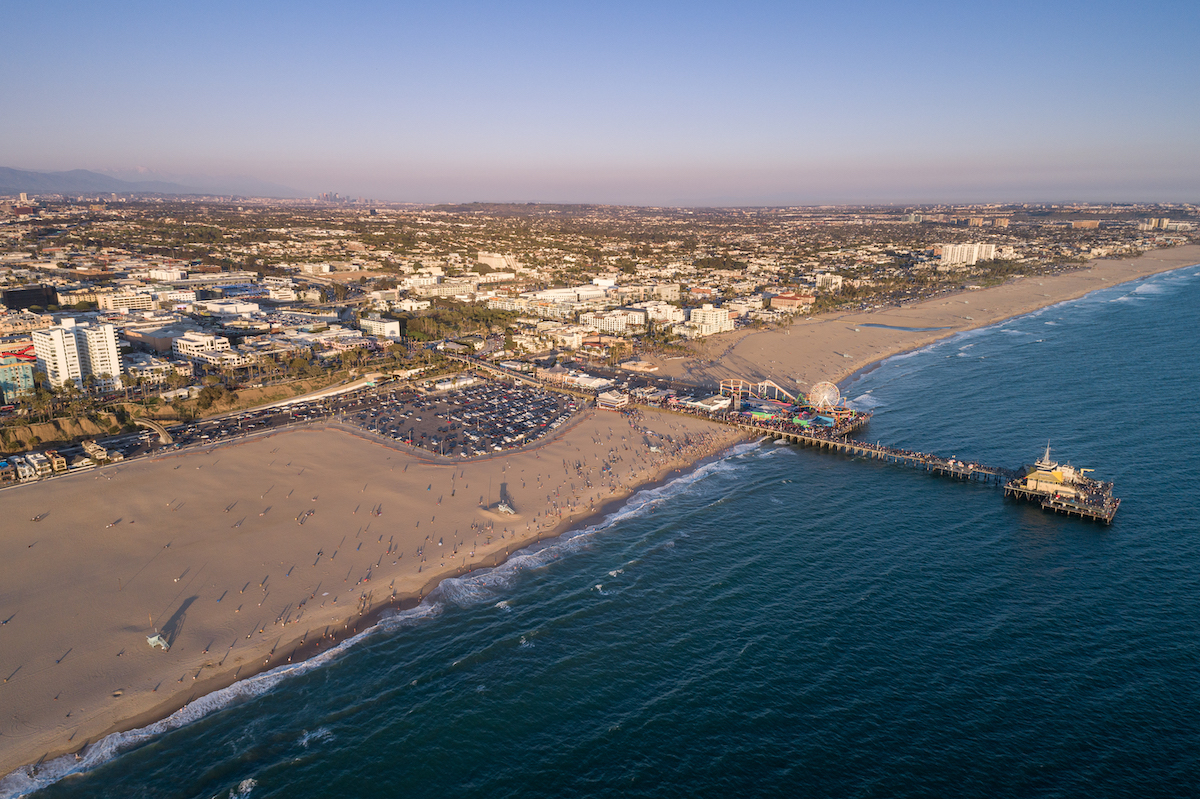Editor’s Note: This is an open letter from the Santa Monica Coalition for a Livable City regarding Tuesday’s Santa Monica City Council Agenda Item 8-A (DSP CEQA Parameters).
SMCLC Objects To Council Agenda Item 8-A
Santa Monica Coalition for a Livable City urges the City Council not to move forward with a Downtown Program EIR (“PEIR”) at this time for several reasons. To do so would be poor planning and severely limit public input. It would also directly contradict specific assurances made to residents by senior Planning Staff at a recent Downtown community meeting attended by over 300 residents, Councilmembers and the Planning Commission that a PEIR would only come after a Downtown Specific Plan (“DSP”): “We have not even drafted a plan yet, and even after we’ve drafted the Plan, we have to do a full program EIR.”
No reason has been given for why this recent promise to residents has been broken. No argument has been made as to why the sound practice of first drafting a DSP and then doing a PEIR based upon the Plan suddenly has been changed in favor of rushing to proceed with a PEIR while the DSP is in the process of being drafted. Indeed, the frequent use of tentative language in describing fundamentals of a draft DSP throughout the Staff Report, demonstrate it is nowhere near complete and does not meet the CEQA requirement of a “stable project description.”
(* For example, “the DSP [sic] considers continuing the same 84 feet height limit adopted in the 1984 General Plan” (p.11); “considers a conservation district for the 3rd Street Promenade” (p12); “considers raising heights to 50 feet along Ocean” (p.12); states that the “Expo Light Rail Station “could produce significant public parking spaces” (p.15); and states that “discussions to date haven’t determined any specific guidelines for the “opportunity sites” or appropriate zoning envelope” (p.17)). These are all important planning issues yet to be determined that would change what the PEIR would analyze and alter the environmental impacts.)
As the staff report itself demonstrates, there are a number of important areas and key planning decisions that have not yet been determined for a draft DSP that would also need to be studied in a PEIR. None of these matters have been included in the staff recommendations for the PEIR. Consequently, we now face a serious risk of not studying them in a PEIR. To do the PEIR and the DSP simultaneously seriously risks having both of them be defective, all in an attempt to rush through the process.
Issues that need to first be resolved in a DSP include the relative balance of the Downtown for tourists and for residents. Yet the Staff Report describes Downtown as “a regional draw for retail and beach patrons and an international, national and statewide destination for tourists.” (at p. 6). If there is no resident mandate for a Downtown built mainly and increasingly for tourists, as SMCLC believes, then what would the PEIR study? Would it include a Downtown friendly to and for the use of residents, or, as one City consultant advised, a Downtown mainly for tourists with some residents present to add “authenticity” to the tourist experience? Additionally, the DSP must develop, and a PEIR then study, a preservation and conservation policy, adaptive reuse and development regulations to retain the existing scale and character of a mix of historic and new buildings in the Downtown core and treat them as prime assets. To do otherwise, would be to promote the loss of the unique character these assets provide and virtually guarantee their demise.
SMCLC urges that:
1. A draft DSP should be completed, circulated and reviewed before any PEIR is authorized.
2. Notwithstanding this, if the Council intends to proceed simultaneously with a draft DSP and a PEIR, the Planning Commission should first review what should be studied in the PEIR, which it is set to consider the day AFTER this Council meeting. The Planning Commission is the body that should normally review this Staff Report and offer the Council its recommendations. To eliminate such review, is a poor use of resources and raises serious questions about the process.
3. The Council should not proceed with this important decision with two of seven Council members absent.
4. In any and all events, if a PEIR is authorized, it very importantly should also include a “no project” alternative of no change to existing (actual) levels of height and density because the majority of the Downtown has never been developed to 84 feet and is highly successful at this
lower scale. The Staff Report recommends limiting the “no project” alternative to “no change to existing regulations,” but then states that whether the Downtown should “continue the same 84 feet height limit adopted in the 1984 General Plan” is still under consideration. (Staff Report at p. 11). Therefore, build-out based on the existing scale should also be studied. The ongoing success of our Downtown has been the retention of its unique, low-scale profile as manifested in the Third Street Promenade and by the preservation of Santa Monica Place. Therefore, the PEIR also needs to study (a) heights below 84 feet, (b) preservation, (c) adaptive reuse of existing structures and (d) a conservation district overlay, all of which would need to be part of and fleshed out in any draft DSP.
5. No basis has been shown under LUCE to study heights for the so called “opportunity sites” above the existing and proposed 84 feet limitation. LUCE established a framework of only three development tiers citywide, not three tiers plus a fourth for “opportunity sites.” Tier 3 projects allowing the greatest level of height and/or density were to be the exception, justified by the greatest level of community benefits. Prior planning presentations have indicated that “opportunity sites” would be part of Tier 3 for the Downtown which is consistent with LUCE. Under LUCE, what remains to be done is for a DSP to set the heights and densities for Tiers 2 and 3 of the Downtown. Nowhere in the extremely brief description of “opportunity sites” in LUCE does it say that these sites would be eligible for heights and densities over and above those to be determined for Tier 3. If it had, there would have been an enormous public outcry at the time.
6. If for any reason heights above 84 feet were to be studied for the “opportunity sites,” the PEIR analysis also should study reduced FARs for those sites, balancing greater height with lower density to achieve stated design goals of “activating ground floor plazas,” providing more “open space” at the ground floor, or more light and air to adjacent structures.
7. In no event, should a PEIR study heights and densities above those recommended by staff. To include heights and densities above that recommended by staff, (such as studying the 15- to 21-story heights and densities proposed by developers of the three hotels on Ocean Avenue), would turn the planning process on its head by making developer “wish lists” the marker for what is studied. These heights and densities would fundamentally and negatively change the character and scale of Santa Monica. Residents have overwhelmingly and strongly opposed them. To include them, in opposition to the expressed views of residents and staff, would be an outrage.
Conclusion:
We all know that what is studied has an enormous impact on final decision making.
Therefore, we urge you to adhere to a planning process that prioritizes a draft DSP before a PEIR, and that recognizes the important role that the Planning Commission and the public need to play in realizing a plan for the Downtown that will guide the City’s growth for the next 20 years.
Any PEIR as well as any draft DSP, must also consider keeping significant parts of the Downtown at its present scale of predominantly 1- to 3-story buildings and therefore lowering the existing heights and densities from the 1984 General Plan given the remarkable success enjoyed by the Downtown because of its pleasing scale and relationship to the rest of the City and the ocean. As the planning process moves forward, it is our obligation to guard and build upon what is unique and works, and not overdevelop our City in response to development pressures that will result in crippling traffic and unsustainable growth.
Sincerely,
Diana Gordon
Co-Chair
Cc: Rod Gould
Marsha Moutrie
David Martin
Francie Stefan
Planning Commission
Neighborhood Group Leaders












